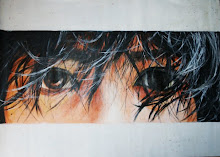Art may mean very different things in different times and places. Someone may like a landscape painting because it reminds him of home. Others may like a portrait because it reminds them of a friend, relative or a lover. When we see a painting we are bound to be reminded of a hundred-and-one things which influence our likes and dislikes. As long as these memories help us to enjoy what we see, we need not worry.
Most people like to see in pictures what they would also like to see in reality. This is quite a natural preference. We all like beauty in nature and are grateful to the artists who have preserved it in their works. In fact, we may discover that the beauty of a picture doesn't really lie in the beauty of its subject matter. The trouble about beauty is that taste and standards of what is beautiful vary so much.
“What is true of beauty is also true of expression.” It is often the expression of a figure in the painting which makes us like or loathe the work. Some people like an expression which they can easily understand and move them profoundly. Yet others are fond of paintings or sculptures which leave them something to ponder about. Just as some people prefer someone who uses few words and gestures and leave something to be guessed. Even if this intense expression of feeling appeals to us, we should not, for that reason, turn away from works that perhaps less easy to understand.
In the more ‘primitive’ periods, artists were not as skilled in representing human faces and gestures as they are now. They tried to bring out the feeling they wanted to convey. Great artists of the past have devoted much labor to works. Every tiny detail is carefully recorded. Nowadays what people like the best are paintings which ‘look real?’ They’d admire the artist’s skill in representing the things they’d like to see in everyday life. It is not sketchiness that mainly offends people who like their pictures to look ‘real’. They are more repelled by works which they consider to be ‘incorrectly drawn’.
Everyone who has ever seen a Disney’s film or a comic strip knows that it is sometimes right to draw things one way or another. Mickey Mouse doesn’t look very much like a real mouse. Yet people don’t write indigent letters to the papers about the length of his tail. What's more, people don’t watch Disney’s films armed with the same prejudices they’d like to take with them when going to an exhibition of modern paintings.
I have read ‘The Story of Art’ a book written by E.H. Gombrich. On the very first chapter, Gombirch wrote that; “there are two things which we should always ask ourselves if we find ‘fault’ with the accuracy of a picture. One is whether the artist may not have had his reasons for changing the true nature of what he saw. The other is that we should never condemn a work of being ‘incorrectly drawn’ unless we have made quite sure that we are right and the painter is wrong. We have a curious habit of thinking that nature must always look in a way we accustomed to.” Children sometimes think that stars must be star-shaped, though naturally they are not. Those who insist that in a picture the sky must be blue and the grass must be green, are not very different from these children.’ The story illustrates the harm that may be done by those who dislike and criticize works of art for wrong reasons.
When it is a matter of matching forms or arranging colors, an artist must always be ‘fussy’ or rather fastidious to the extreme. The artist may see differences in shades and textures in his painting which others may hardly notice. His task is more complex than any other people’s experience in ordinary life. He has not only to balance two or three colors, shapes, or tastes but also balancing the shades and forms till they look ‘right’. He may suffers queries over his problem. He may ponder about it in sleepless nights. He may stand in front of his painting all day trying to add a touch of color here and there; rubbing it out again, though no one would notice the difference either way. Once the artist has succeeded, he has achieved something to which nothing could be added, something which is ‘right’ - an example of perfection in our very imperfect world!























































0 komentar:
Posting Komentar